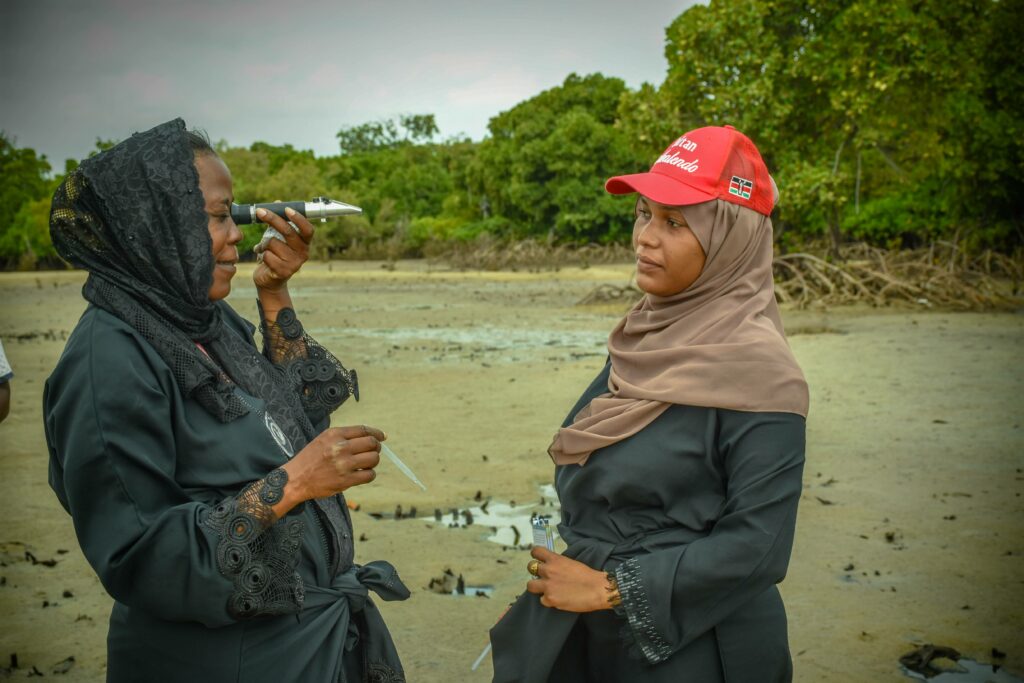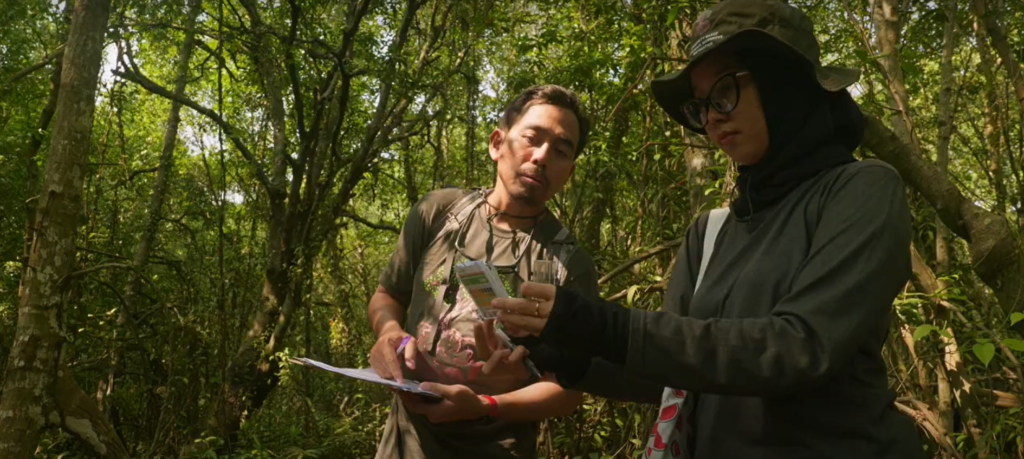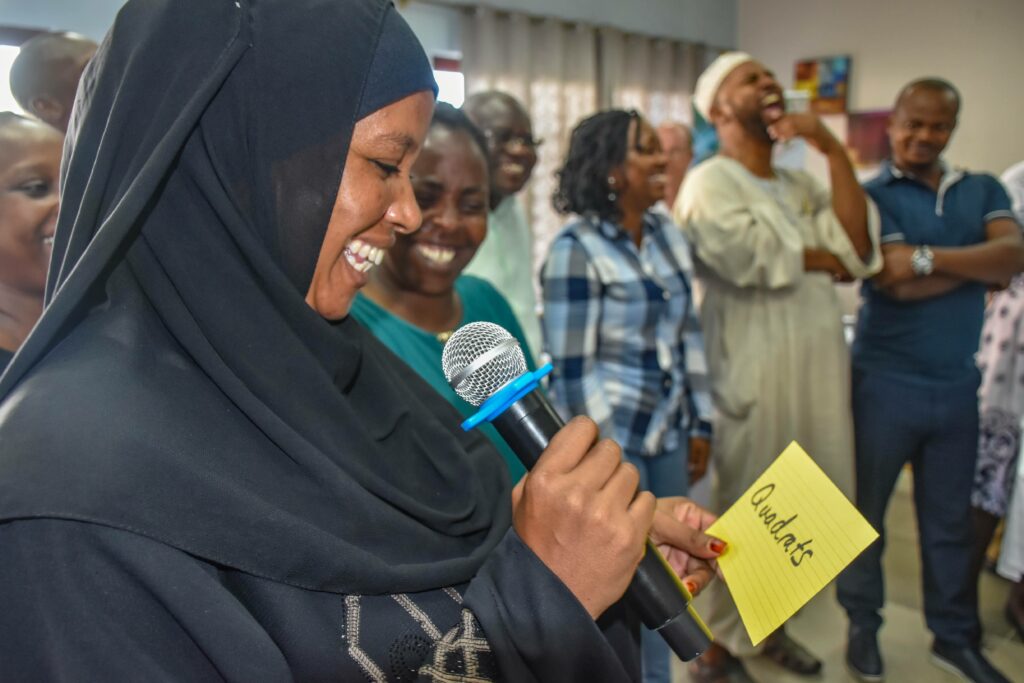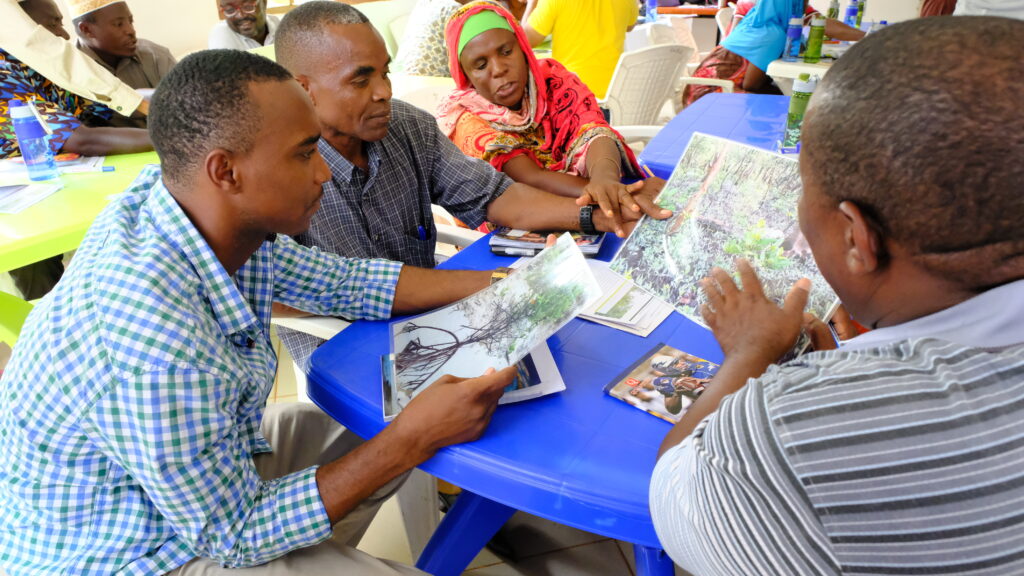
Building capacity on Ecological Mangrove Restoration across the world
-
Coasts & Deltas
To restore mangroves, active planting has gained popularity worldwide, including in many areas where Wetlands International works. Planting mangroves may seem like an easy and quick way to restore, but planting efforts have been failing to a large extent (~80%), especially in areas that have been extensively altered. Wetlands International therefore adopted a more effective approach called Community-Based Ecological Mangrove Restoration (CBEMR) in its projects, and has been building the capacity of around 700 stakeholders around the world to use and upscale the approach through regular CBEMR trainings.

which is an important parameter in mangrove growth. Elizabeth Wamba, Wetlands International
Enabling mangroves to regrow naturally
The Community-based Ecological Mangrove Restoration approach moves away from monoculture planting towards restoring the hydrology and other enabling conditions for mangroves to regrow naturally. Planting is only undertaken when absolutely necessary, for example if there is a lack of seed supplies to your site. While natural regeneration takes longer than planting, trees that naturally appear will be able to survive in the suitable conditions that were created and deliver more benefits for biodiversity, climate and people. In contrast, planting tends to use a single species in often unsuitable biophysical conditions for the species used. These mangroves are also more susceptible to pests and diseases. In addition, restoration projects must create the right socioeconomic conditions to support their long-term protection.
Enabling others to effectively restore mangroves
Through various projects including ‘To Plant or not to Plant’ in Indonesia, Philippines, Guinea Bissau and Tanzania, and our Mangrove Capital Africa programme in West and East Africa, Wetlands International is restoring mangroves together with local partners, using the CBEMR approach.
While the activities we support or carry out ourselves get results in the locations where they take place, we do everything we can to enable others to do the same things across far larger areas than we’re able to directly cover ourselves. Awareness-raising, training and technical support are all central aspects of our work with local communities and NGOs, who we encourage and support to adopt our approaches and share them more widely.

For training its stakeholders on the CBEMR approach, Wetlands International joins hands with Mangrove Action Project. Together we train community organisations, national and local governments and county officials, park managers, research institutions, universities, private sector and civil society. This often leads to adoption of these best in their projects. Thus far we have trained # across the world, in North Kalimantan, (Indonesia), Saloum Delta (Senegal), Lamu, Tana River and Mombasa counties (Kenya), Rufiji Delta (Tanzania), Cacheu National Park (Guinea Bissau) and Mozambique.
Video Community-based Ecological Mangrove Restoration training with Wetlands International Indonesia, developed by Mangrove Action Project:
Short film on Community-based Ecological Mangrove Restoration as implemented and promoted by the Global Mangrove Alliance Indonesia, developed by Mangrove Action Project:
The Ecological Mangrove Restoration trainings are always tailored to participant’s needs and the local mangrove conditions. For instance, In Tanzania, the training also specifically focused on the issue of encroachment by rice farmers in the western end of the Delta. The trainings are always fun and diverse, involving interactive class sessions, table exercises, group sessions, and numerous field visits, all translated into the common local language.

Participants are always enlightened on the importance of mangroves and the right techniques to restore them. Some trainees have to relearn what they know as facts about mangroves and their restoration.
Abdulrahman Lali, Chair of Lamu Mangrove Community Forest Association:
“I am almost 50 years old and in my whole life, I have all along known that salt is a necessity for healthy mangroves. At the beginning of CBEMR training, I argued with the trainers about mangroves being salt-tolerant. But after the field visits with the MAP and Wetlands International teams to assess the hydrology, measure salinity and pH levels, I have observed and agreed that too much salt is a stressor to our unique forests. I have been to Mombasa, Malindi and Nairobi for mangrove restoration training workshops organised by various institutions. But this CBEMR training is like none other. Also, in Lamu, we harvest mangroves legally. The cutters are in the business as it is their main source of livelihood. If there is an alternative and sustainable livelihood, then we would encourage them to shift from mangrove cutting to stem mangrove loss”.

Mwanahamisi Jillo, a manager with Lower Tana Delta Conservation Trust, travelled some 120 kilometres east with her 11-month baby to attend the training in Lamu. Appreciating the knowledge gained from the training, Jillo also laments about the restoration efforts she and her colleagues have done in the past. “I wish this CBEMR training had been conducted years ago. Had I known how to identify the ecological and biophysical conditions first, I would never have planted mangroves in drainages and waterways as I have done. It’s the best training I have participated in and I am grateful to Wetlands International and MAP for this opportunity. I will ensure that I put into practice what I have learnt and share the knowledge with my colleagues.”

another important parameter in mangrove growth. Elizabeth Wamba, Wetlands International
Learn more about Ecological Mangrove Restoration
- Mangrove Restoration: To Plant or not to Plant leaflet (available in 11 languages)
- Best Practice Guidelines on Mangrove Restoration
- Case study: Demonstrating and upscaling Ecological Mangrove Restoration in North Kalimantan, Indonesia
- Case study: Large scale implementation of best practice mangrove restoration in Guinea Bissau
- Achieving ambitious mangrove restoration targets will need a transdisciplinary and evidence-informed approach (Fries, D., et al, One Earth, 2022)

Supported by:
Our Ecological Mangrove Restoration work is supported through programmes, with contributions from DOB Ecology, Otter Fonds, Tűring Foundation, COmON Foundation, Waterloo Foundation, Greenchoice, Salesforce, Flotilla Foundation and l’ Oreal Fund for Nature Regeneration.
Susanna Tol



